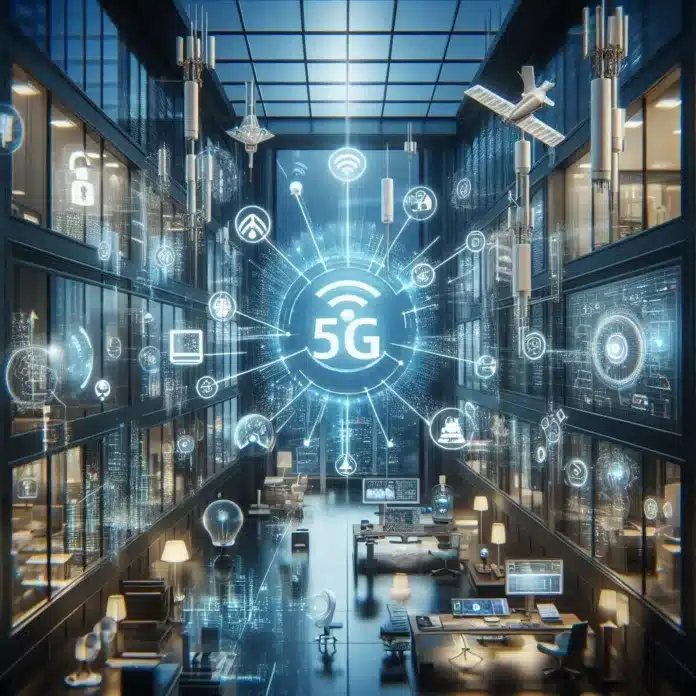Indoor connectivity has always posed challenges, from inconsistent signal strength to dead zones. With the advent of 5G, we’re on the cusp of a new era in indoor wireless communication. Here’s how 5G is set to revolutionize our indoor environments:
5G’s high-frequency bands and advanced antenna technologies promise to deliver stronger and more consistent signals indoors. This means fewer dropped calls, faster internet speeds, and seamless streaming experiences in every corner of your home or office. For example, Verizon’s 5G Home Internet service, which has been rolled out in select cities, illustrates the transformative impact of 5G on indoor connectivity, providing high-speed internet and reduced latency.
- Smart Building Integration:
Imagine a smart building where every device communicates effortlessly. 5G will support the vast network of IoT devices, from smart thermostats to intelligent lighting systems, providing a backbone for automation and energy efficiency. The Edge in Amsterdam, one of the smartest buildings in the world, leverages 5G to integrate IoT devices, creating a seamless and efficient smart environment.
- Improved User Experience:
For businesses, 5G can enhance customer experiences with real-time data processing. From augmented reality (AR) shopping experiences to interactive digital signage, 5G will enable richer and more engaging interactions. AT&T has showcased this potential with their 5G-enabled augmented reality experiences in retail environments, offering interactive and immersive customer interactions.
- Challenges and Solutions:
While 5G offers immense potential, integrating it into existing indoor infrastructure requires planning. Addressing issues like signal penetration and equipment compatibility will be crucial to maximizing its benefits. AT&T’s deployment of small cells and millimeter-wave frequencies in dense urban areas addresses challenges related to signal penetration and equipment compatibility.
Challenges to watch : Despite its potential, 5G’s high-frequency bands may struggle with penetration through walls and obstacles, limiting its effectiveness in certain indoor environments. The transition to 5G will also necessitate significant upgrades to existing infrastructure, which could be cost-prohibitive for many organizations. Furthermore, there are concerns about the potential for increased electromagnetic radiation exposure and its long-term health implications, which remain a topic of debate.
Personal Opinion: I believe that 5G holds incredible promise for revolutionizing indoor connectivity, but it’s essential to approach its deployment with a balanced perspective. While the technology’s potential is vast, its successful implementation will depend on addressing the practical challenges and ensuring equitable access. The debate over health implications and cost must be part of an open dialogue as we move forward.
- The Future of Indoor Connectivity:
As 5G technology matures, its role in indoor environments will become increasingly prominent. The focus will shift towards optimizing and expanding coverage to meet the demands of a connected world.
Don’t miss our 5G Online Training courses to boost your careers and upskill in new technologies.
Benefit from Massive discount on our 5G Training with 5WorldPro.com
Start your 5G journey and obtain 5G certification
contact us: contact@5GWorldPro.com


